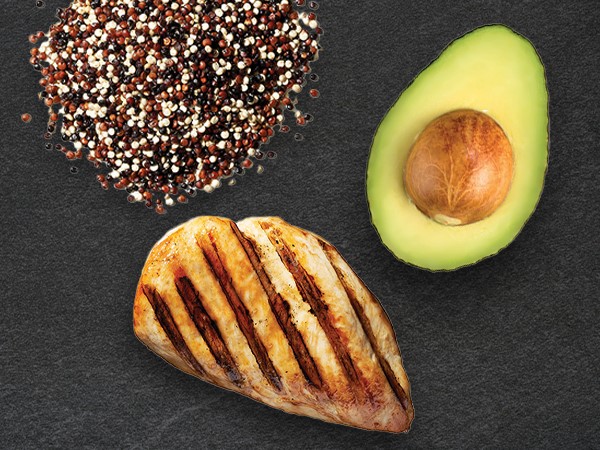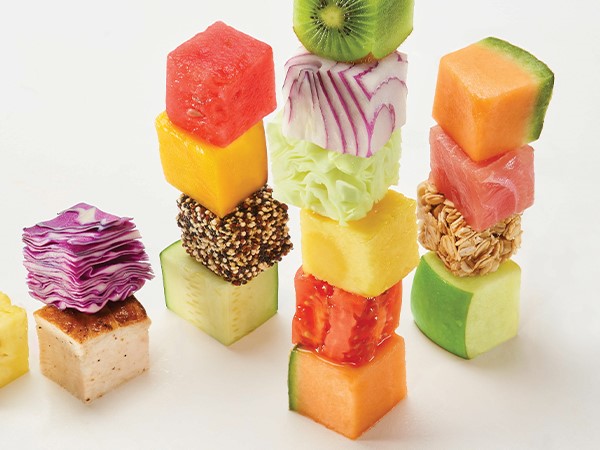Description
Learn the difference between the two and why your body needs plenty of both to perform it's best. Elisa Sloss, RD, LD covers the basics and answers all your questions about macro and micronutrients. Have more questions? Set up an in-store nutrition tour with a Hy-Vee Dietitian.
What are macronutrients?

Carbs
Function: Provide glucose which converts into energy to support bodily functions and physical activity. Healthy sources of carbs are whole grains, veggies, fruits, and beans. Limit or avoid carbs from processed or refined foods, including white bread, soft drinks, and desserts.
Good Sources: Bananas, beans, blueberries, brown rice, butternut squash lentils, oatmeal, quinoa.
Protein
Function: Build and maintain bone, skin, and muscle in every part of the body. Protein is integral for repairing damaged cells and creating new ones. Protein is not stored like carbs or fat; it must be replenished daily.
Good Sources: Beans, beef, chicken, dairy, eggs, legumes, nuts, pork, seafood, turkey.
Fat
Function: Provide energy and help the body absorb vitamins. The body needs fat to function but too much can negatively affect health. Healthy mono-and-polyunsaturated fats may help improve blood cholesterol levels.
Good Sources: Almonds, avocados, chia seeds, flaxseeds, hemp seeds, olive oil, peanut butter, pecans, pumpkin seeds, salmon, sesame seeds, walnuts.Related Content, Salad
Steak Salad with Green Goddess DressingWhat are micronutrients?

Vitamins
Function: Thirteen vitamins help support functions of the body and overall health. Vitamin C and seven B vitamins dissolve in water and the excess is excreted through urine, so they must be replenished regularly. The remaining vitamins dissolve in fat and are stored in fatty tissue for future use.
Good Sources: Asparagus, berries, carrots, citrus fruit, broccoli, bell peppers, leafy greens, lean meat, whole grains.
Minerals
Function: minerals come from soil and water and are absorbed by plants and animals. Like vitamins, minerals are essential nutrients for healthy growth, development, and carrying out bodily processes. Without them, the body would function poorly. The body needs major minerals, such as calcium and magnesium, in greater amounts than trace minerals, such as copper and zinc.
Good Sources: Bananas, beans, broccoli, chicken, dairy, eggs, legumes, salmon, spinach, tuna, turkey, walnuts, whole grains.How are they measured?
Macronutrients are measured in grams and micronutrients are measured in milligrams or micrograms. The recommendations for single nutrients are not one-size-fits-all. Our bodies need more of certain macro-and-micronutrients than others.
Related Content, Main Dish
Sauteed Cod with Broccolini and Green RiceDo some foods have both macro-and-micronutrients?
Yes! Almost all foods have both in varying amounts.
Can monitoring macronutrients help me hit my fitness goals?
Yes, you can track macronutrient consumption to meet a targeted caloric intake to either build muscle or lose weight. Amounts of macronutrients and calories consumed may vary greatly by person and goal. Meet with a Hy-Vee Dietitian to discuss your goals and get an accurate calculation of your macronutrients.
How can I ensure that I get all the nutrients I need?
The best way to ensure you consume all the nutrients you need is by eating a varied diet rich in colorful fruits and veggies, lean meat, and whole grains.

